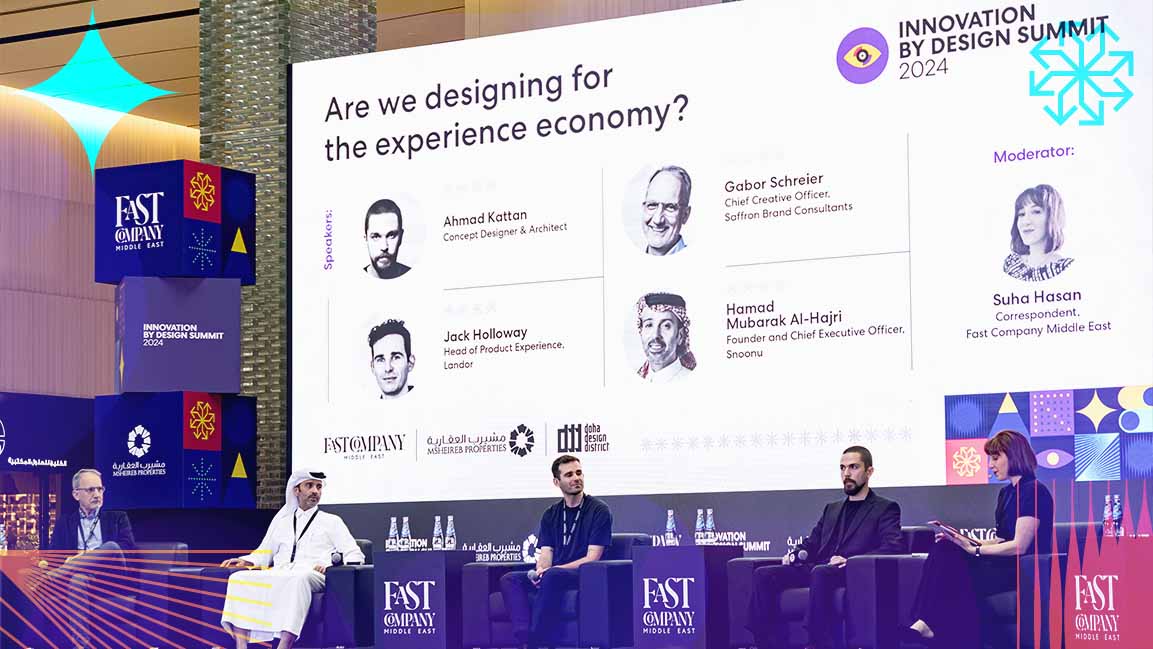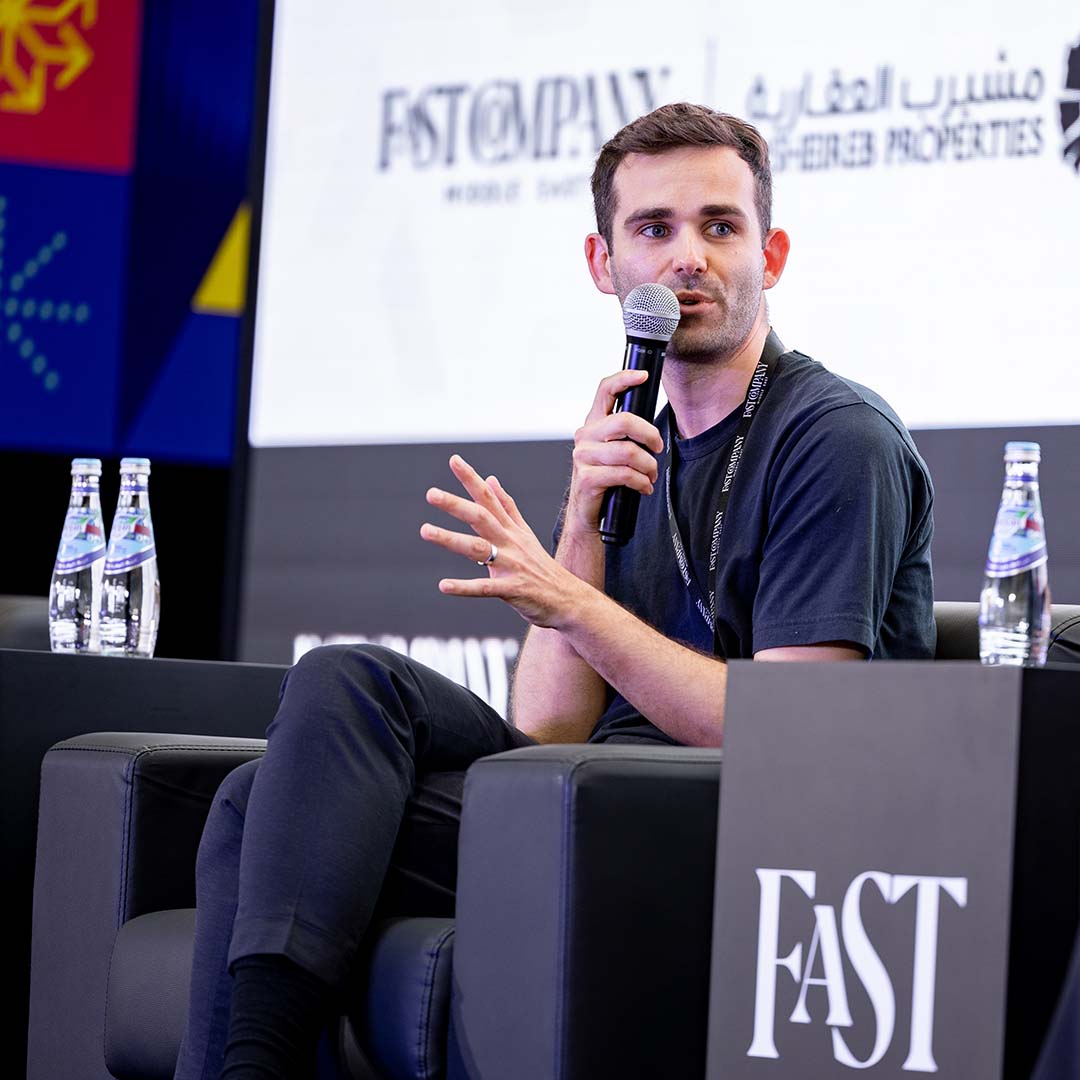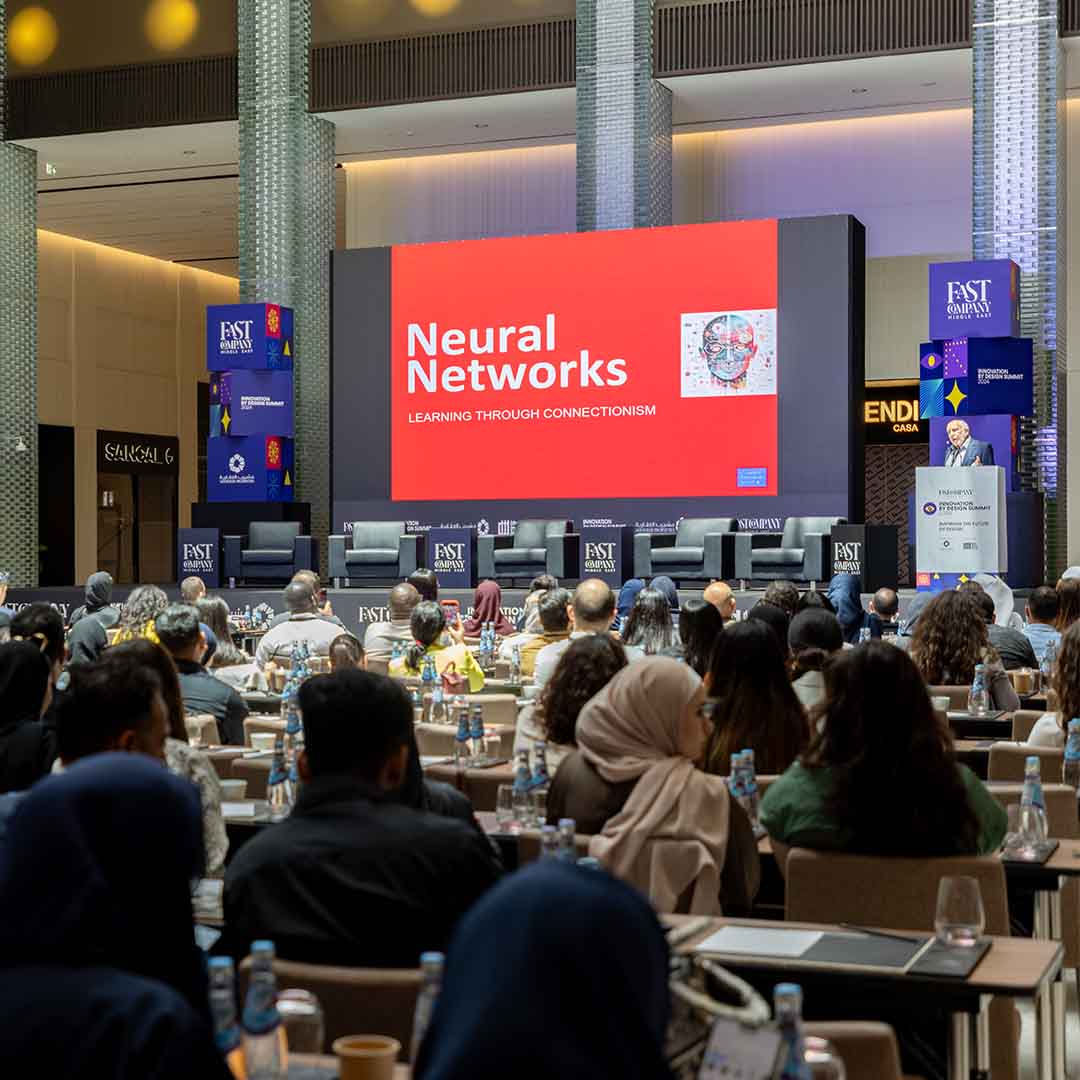- | 9:00 am
This is how businesses are designing for the experience economy
Experts discuss the need for collaboration, how to overcome the creative block, and the adoption of technology on UX.

A PwC report emphasizes the shift beyond transactional interactions to embrace innovation and personalization in the emerging experience economy. It stresses the importance of businesses offering seamless, engaging, personalized products or services to stay competitive.
However, crafting this user experience is no small feat. It requires a comprehensive strategy that acknowledges the interdependence of engineering, marketing, design, and interface. More than merely meeting expectations: the goal now is to surpass them and introduce compelling experiences.
At Fast Company Middle East’s Innovation by Design Summit, held in partnership with Msheireb Properties at Qatar’s Doha Design District, panelists and speakers discussed the challenges of designing for the user experience economy.
During a panel discussion, Ahmad Kattan, a Concept Designer and Architect, acknowledged this shift, emphasizing, “The present and the future involve more experience-oriented designs, concepts, and buildings that are not only serving their physical purpose but evoking emotions.”
Jack Holloway, Head of Product Experience at Landor, added that experiences used to be primarily transactional and functional. However, there’s now a shift towards prioritizing emotion in shaping the desired feeling of an experience.
This shift stems from the widespread use of digital platforms, mainly social media. Brands, businesses, and organizations are beginning to recognize the marketing advantages of crafting emotive experiences, effectively generating social currency from them,” he adds.
Hamad Mubarak Al-Hajri, Founder and CEO of Snoonu, describes the process as storytelling for products and services, underscoring the significance of collaboration among designers, technology teams, and business developers.
Gabor Schreier, Chief Creative Officer at Saffron Brand Consultants, notes that due to this dependence on technology, designers are grappling with what he terms a “digital dictatorship.” He elaborates, “Everything seems to be following the same patterns, and this puts a lot of pressure on us creatives and branding people to figure out the real difference between one app and the other.”
Technology, including artificial intelligence (AI), not only plays a significant role but also has a potentially detrimental impact on how designers carry out their work. AI influences marketing, product development, and service operations, leading to technology and business strategy convergence.
This influence extends to content creation, where content consumption is transitioning from traditional mediums like newspapers, TV screens, and laptops to mobile devices.
With all these changes in technology and user needs, designers aim to strike the right balance.
MULTIDISCIPLINARY TEAMS

The harsh reality is if businesses want to move forward and provide an improved user experience in today’s world, they will need to work in teams.
“We always say that a brand or product promises an experience delivered. So if you want to create something for a brand or product, you need to do this with different types of people, be it designers, UX designers, architects, musicians, motion designers,” says Schreier.
Holloway adds that incorporating diverse levels of experience, various thinking styles, and approaches to design tasks is also essential.
Everyone must be aligned on the intended goal and the type of user experience they aim to create, with a focus on the necessary differentiation to elevate and distinguish the product or brand.
However, this process requires time to experiment with various approaches, prototype, iterate, and respond to consumer insights and client feedback. Meanwhile, designers need the freedom to create and collaborate effectively with the rest of the team.
Al-Hajri emphasizes the importance of a shared goal, clarifying that the role of an entrepreneur is often misunderstood as someone separate from the team.
“The ultimate goal for any entrepreneur is a good experience. It’s to build the brand name, which is the overall goal for all of us. In the GCC, many people underestimate the importance of brand building, but the foundation starts with your name and slogan,” he says.
“It’s about small teams, typically comprising six to ten individuals. They don’t just have IQ; they possess WeQ, meaning they think collaboratively together,” he adds.
It’s crucial to recognize that a user’s experience starts early, from the moment they conceive and search for that experience, making brand identity vital for any UX.
From an architect’s viewpoint, Kattan emphasizes that delivering these experiences often falls beyond the architect’s control. He adds, “If we don’t collaborate with multidisciplinary teams, including those responsible for brand identity, I believe we’ll continue with our business-as-usual models for longer.”
CREATIVE BLOCK

As creatives, encountering a mental block is a common challenge. This can occur for various reasons, such as running out of ideas, becoming fixated on one idea for an extended period, or simply being unsure of the cause of the block.
In the user experience economy, such challenges can pose significant business obstacles. Al-Hajri describes this phenomenon as a “creativity crisis,” wherein an organization develops a product or service that has seemingly reached its peak, hindering further progress.
He suggests that organizations should turn to their consultants, and who better than their consumers to share their experiences and thoughts?
As a product designer, Holloway suggests that designers should be focused on the future and always stay ahead of the curve. “I design products today that won’t be launched for another five years. So when I talk about the future, I don’t mean tomorrow. Tomorrow was defined five years ago.”
“To define that, you need to start by identifying your brand’s North Star. What do you want to be known for in five years?” he adds.
On balancing innovation, creativity, and design with practical considerations of usability and functionality, Schreier mentions that “beauty is relative, but experience is universal,” explaining that designers need to evaluate and measure where creative decisions are made and when functional considerations are more relevant.
With this, Holloway prefers the more creative approach over the conventional one, as it delves into the psychological aspects of design and enables a more personalized user experience.
THE AI TSUNAMI

Nearly 75% of all content in the world today is conceptualized and produced for consumption in rectangular formats, with 82% consumed in a vertical format.
Considering that people look at their phones an average of 114 times a day, designing for this user experience poses a challenge. How do we transition from designing for larger canvases, such as the newspaper page or the computer screen, to accommodate this shift?
During a presentation, Dr. Mario R. García, Chief Executive Officer & Founder of García Media, highlighted that we are currently grappling with two revolutions: mobile and AI. “All of you are consuming news and information on a mobile device. Yet, the design of most information is not tailored for this small platform but for larger platforms.
García suggests working in reverse now. “The whole idea is that you plan from small to large. For journalists and designers, this is very difficult. All of us in design should be designing things to be consumed vertically and to be consumed on a mobile device.”
However, we have yet to embrace this approach entirely. In the digital journalism realm, there needs to be better coordination between journalists and designers to ensure a seamless user experience.
The integration of artificial intelligence is part of the disruption in the user experience economy due to digitization.
“I believe it’s the best time to be a designer or an architect because of AI and the limitless power at our fingertips. It’s tricky and challenging because we need to embrace it rather than try to fight it,” says Kattan.
“Whether you like it or not, it’s a tsunami at your door,” says García, emphasizing that there’s no need to fear it. Ultimately, humans remain integral to the process.
He further emphasizes that while AI possesses knowledge and can rapidly connect things, humans remain the primary drivers of creativity, with the ability to conceptualize and visualize abstract ideas.
“AI is a tool. Humans are the creators. It’s essential to perceive it that way. In design, we’re witnessing AI evolving into a tool. Newspapers with print editions now employ AI to layout all printed pages, but the humans have crafted the design template.”
Ultimately, there needs to be a connection between AI and people.








































